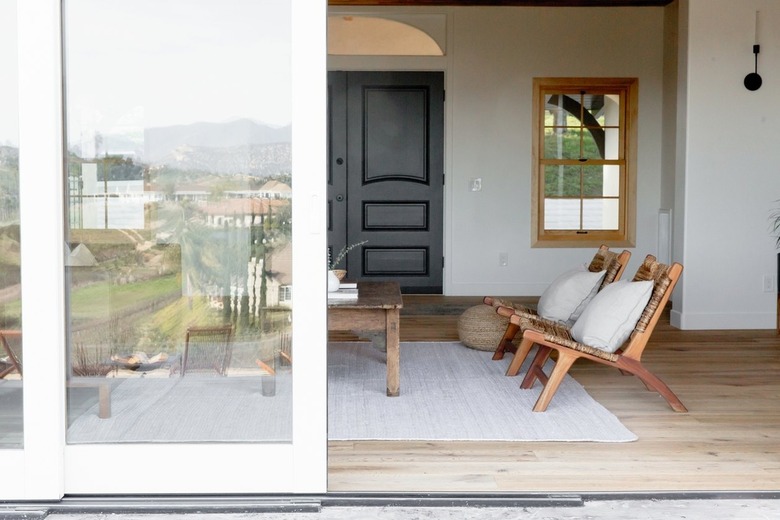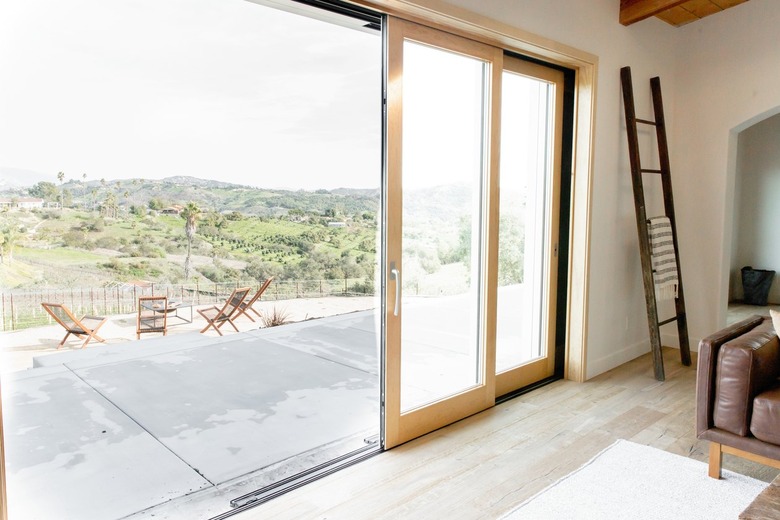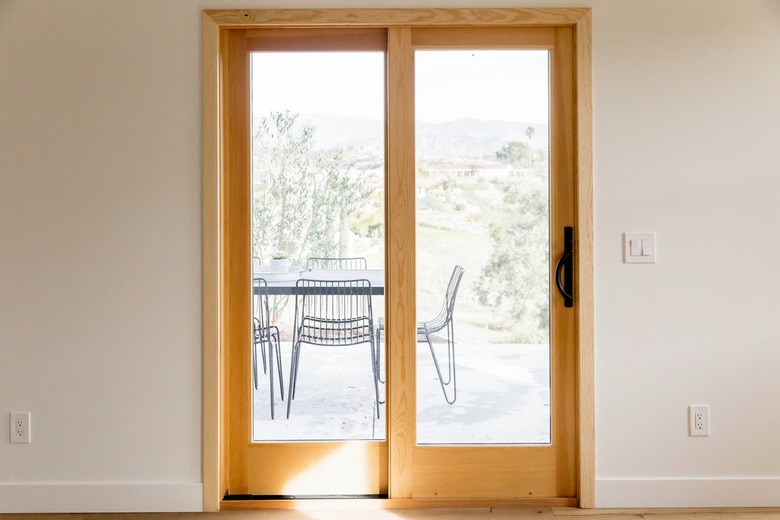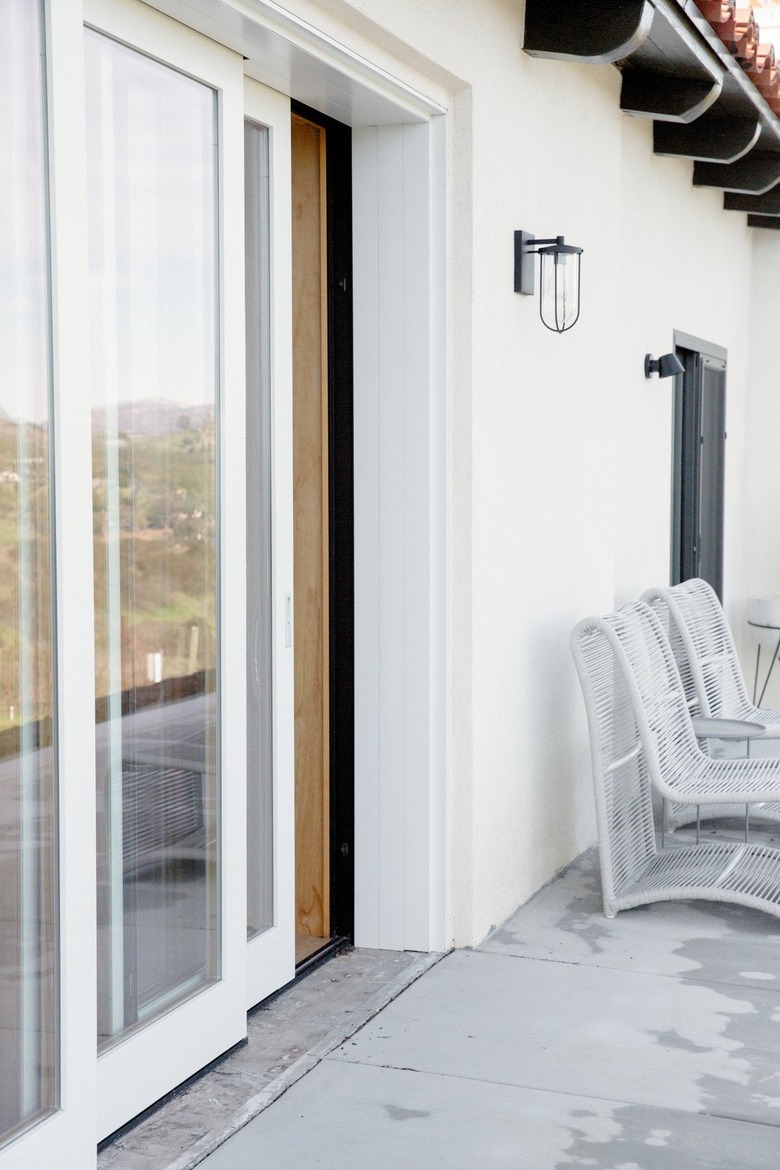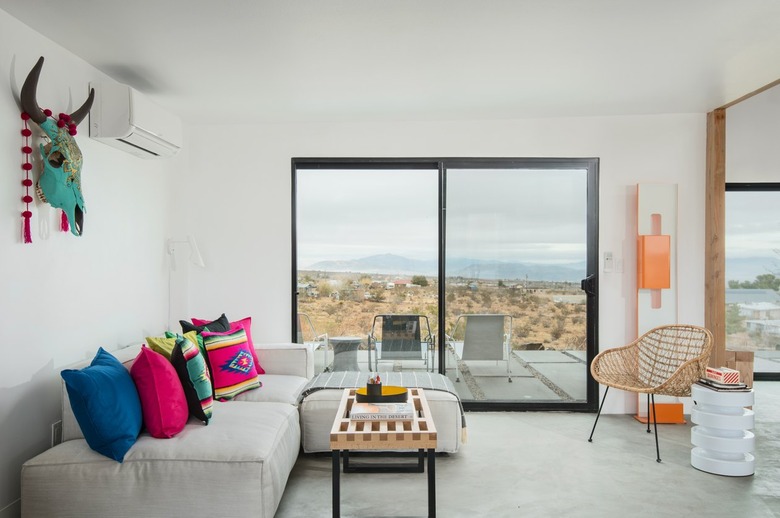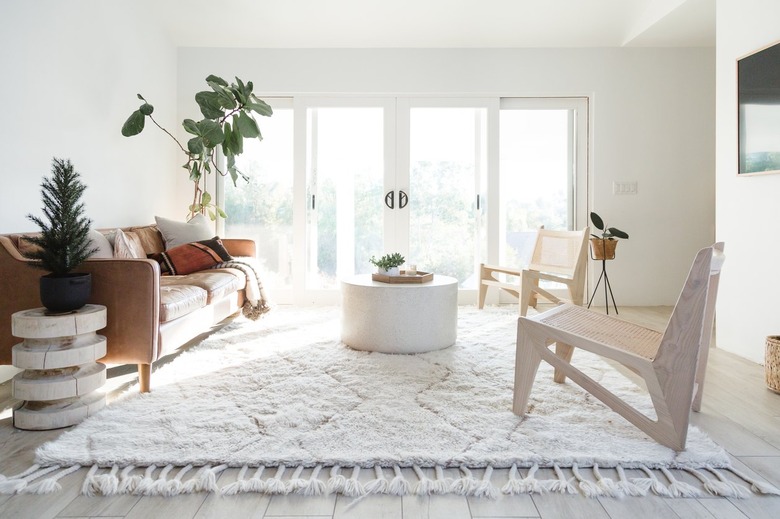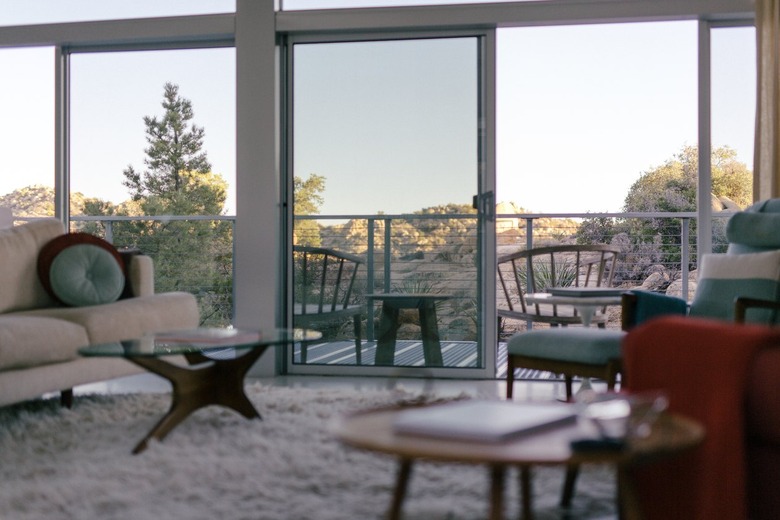Buying Sliding Patio Doors? Read This First
Patio doors are, at their most practical, a way to get into the backyard or outdoor space, but they can also beam natural light into living spaces as well as add interest to the overall aesthetics of a room. Sliding patio doors are a particularly popular option for exterior backyard doors because of their ease of use and their relative affordability (especially when compared to larger, more customizable door options like bifold or telescoping).
Most patio doors consist of a fixed panel and one that opens, and a panel that slides rather than swings requires a minimum of interior or exterior floor space. That makes it just as suitable for a bedroom with a balcony as it is for a living room that opens to a patio. But sliding glass doors aren't without their woes — glass doors often present energy-efficiency considerations. Fortunately, manufacturers are keeping up with the curve on this issue, and glass options are available for all climates.
Looking to install or replace a sliding patio door? Here's what you need to know before you buy.
Sliding Patio Door Costs
Sliding Patio Door Costs
When it comes to a sliding patio door, the cost range is wide, ranging from a low of $300 to $5,000 for a top-quality product. The range reflects the differences in framing material, glass, size, and availability of standard-size models. (You'll be looking at top dollar, for example, if you have your door custom made to fit a nonstandard opening.) On top of the cost of the door, installation can cost from $1,000 to $3,000 if you hire a contractor, so a sliding patio door isn't a trivial investment.
The Parts of a Sliding Patio Door
The Parts of a Sliding Patio Door
When discussing design options with your supplier or contractor, you'll be on sounder footing if you know the names for the individual parts of a sliding door.
Jamb
The jamb, like a conventional door jamb, fits into the rough opening in the framing. The top of the jamb is the head jamb, and the bottom is the sill jamb, and both are fitted with bumpers to cushion the impact of the door. The track on which the door rollers slide fits into the sill jamb.
Panels
The door panels have their own frames to hold the glass, and one panel is stationary (fixed) while the other is active (openable). The active panel slides on a pair gliding rollers, each with its own adjustment plug so you can change the distance of the bottom of the panel from the track. The stationary panel is fixed in place with stationary panel brackets. Interlocking weatherstripping is attached to the trailing edge of the active panel and the edge of the stationary panel that it contacts when closed.
Grids or Grilles
Some glass patio doors have removable grids or grilles installed over the glass, partly to protect the glass and partly for appearance. A door with a grille pattern needs grille clips to hold the grille to the frame.
Door Hardware + Extras
Sliding doors don't have the same door hardware you find on conventional doors. They don't need hinges, and instead of knobs, they have handles with reach-out locks that latch onto receivers mounted in the side jamb, and these locks are keyed on the outside. Often, there's also an auxiliary foot lock on the bottom of the stationary panel for extra security.
Patio doors also often come with an insect screen that allows you to keep the door open for ventilation without letting in the mosquitoes. It has its own set of rollers, sometimes on both the top and bottom, and its own handle and reach-out lock.
Jamb and Frame Materials
Jamb and Frame Materials
While glass forms the bulk of a glass sliding door, the frame helps establish the overall design and how well the door fits with your décor. Besides that, you should think about insulation value, amount of maintenance, and, of course, cost.
- Wood is the most expensive option, and the cost of a quality door from a well-known manufacturer, like Andersen or Pella, is likely to come in at the top of the price range. Wood is a good insulator, but it's vulnerable to moisture and is going to call for periodic maintenance, including the occasional painting or refinishing. For this reason, most wood doors are actually wood clad, which means the exterior of the frame is covered with a weather-resistant material, like vinyl or aluminum.
- Vinyl is a low-cost, low-maintenance option, and while vinyl is a material with high thermal conductivity, vinyl frames are usually filled with foam insulation for better thermal performance. Choose the color carefully because vinyl is difficult if not impossible to repaint, and standard colors may not match the exterior colors on your house.
- Aluminum frames, like vinyl ones, are filled with foam unless the door is slated for installation in a utility space, like a garage, where insulation isn't important. Aluminum doors are generally comparable to vinyl ones in cost. Aluminum doesn't corrode, but it can show water spots, so some maintenance will be required.
- Fiberglass is a synthetic material like vinyl, but it's more energy efficient, it can be fashioned to look like wood, and you can paint it. Fiberglass patio doors are generally more expensive than vinyl or aluminum ones and are less expensive than wood ones.
Your choice of frame material also influences the look of the door handle. Upscale brass and chrome handles look great with wood and faux-wood fiberglass doors but are out of place on vinyl or aluminum.
Research Your Glass Options
Research Your Glass Options
The energy performance of the glass, which forms the bulk of glass patio doors, is one of the most important considerations when shopping for a sliding patio door. Glass doors can transfer heat in several ways, including conduction through the glass, radiation, and air leakage. High-quality exterior doors with insulated glass usually have two panes of tempered or laminated glass separated by a sealed layer of argon gas and are covered by a limited lifetime warranty.
If you choose an Energy Star door — which you should — you'll find a sticker affixed to the glass by the National Fenestration Rating Council that specifies the energy performance ratings. (You'll also find this sticker on Energy-Star-rated replacement windows.) These include:
- U-factor, which is a measure of how well the door resists nonsolar heat flow. This number is always less than one, and the lower it is, the more energy efficient the door.
- Solar heat gain coefficient (SHGC) is the fraction of solar heat that passes through the glass. If your door is in full sun in the summer and you want more shade indoors, choose a door product with a low SHGC. If you want the warming effect of the sun in winter, on the other hand, choose a product with a higher SHGC.
- Air leakage is another fraction displayed on the label. The lower this number, the tighter the door, assuming it has been properly installed. This number also indicates how vulnerable the door is to condensation.
- Visible transmittance tells you the fraction of visible light that passes through the glass. Choose a lower number if you want to reduce indoor glare.
What's Involved With Installation?
What's Involved With Installation?
Adding a sliding patio door where none has existed usually isn't a DIY home improvement project. Some exterior walls are load bearing, so the header for the door opening must be sized for the width of the opening and the load it has to support. Moreover, installation calls for some provision for supporting the load while construction is in progress, and that must be specified in the permit application. The national average cost to install a new patio door is about $2,760, but that cost can rise to over $4,000 for very wide doors.
The procedure for replacing an existing patio door with a new one of the same size is one you can do yourself, even when replacing French patio doors or swapping a bifold door for a gliding patio door. The procedure doesn't depend on the different door configurations but only on the size of the framed opening, and since you aren't changing that, you might not even need a permit, although you should check with your local building department to be sure.
Most patio doors come with detailed installation instructions, and they are usually fairly easy to follow. The job can be a big one for DIY novices, though, and if you aren't up to the task, you shouldn't hesitate to call a pro, especially considering that improper installation can void the product warranty. A pro also has the tools and know-how for removing the old door, which can be difficult if the frame is metal and partially corroded or if the fasteners holding the track and sill jamb to the floor are rusted and stripped. The cost won't be as much as installing a new door, but it may still cost $800 to $1,000.
Sliding Patio Door Maintenance
Sliding Patio Door Maintenance
A low-maintenance door with a vinyl, aluminum, or fiberglass frame and energy performance ratings appropriate for the climate usually doesn't need much upkeep. In the winter, it's virtually impossible to prevent some condensation from forming, and since this can promote mold growth on the door frame and jamb, you should wipe it off periodically. Some doors have weep holes on the bottom that allow condensation to drain to the outside, and these should be checked periodically and cleaned if they are blocked.
You'll also want to clean the track and lubricate the rollers periodically using a brush or vacuum and some spray lubricant to keep the rollers operating smoothly. If you have wood sliding doors, you have the extra concern of possible rotting if the wood is exposed to the elements. The solution is to periodically refinish or repaint exposed wood when the existing finish shows signs of peeling or wear.
